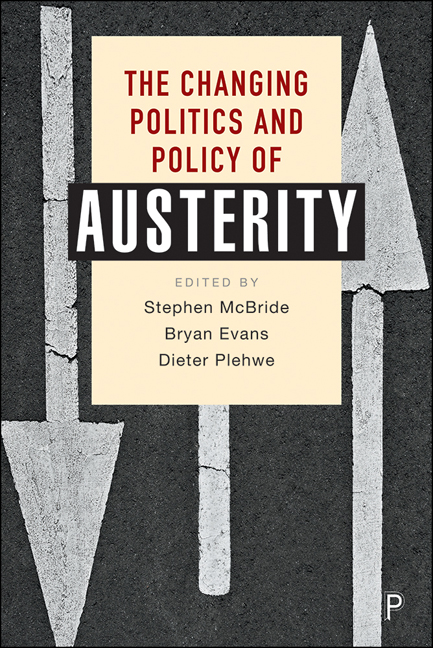Book contents
- Frontmatter
- Contents
- List of figures and tables
- Notes on contributors
- Acknowledgements
- Introduction
- PART I Austerity and the promotion of the private
- PART II Coping and casualties: labour and the social
- PART III Beyond coping: protest, pathologies and the development of real alternatives
- Conclusion
- Index
10 - Austerity-induced populism: the rise and transformation of the new right
Published online by Cambridge University Press: 13 May 2022
- Frontmatter
- Contents
- List of figures and tables
- Notes on contributors
- Acknowledgements
- Introduction
- PART I Austerity and the promotion of the private
- PART II Coping and casualties: labour and the social
- PART III Beyond coping: protest, pathologies and the development of real alternatives
- Conclusion
- Index
Summary
Public and academic discussions in the European Union often relate to two processes, the interaction of which requires some clarification. One is the rise and mode of operation of neoliberalism, particularly, the establishment and implementation of an austerity agenda, that is, efforts to consolidate public budgets through spending cuts (Hermann 2007). This process started in the late 1970s and became more pervasive in most member states since then. Consequently, the austerity policy guidelines were enshrined as an important component of the European treaties. Furthermore, they were made even stricter in the transition from the financial to the so-called sovereign debt crisis. The second process is the strengthening of right-wing populism in the member states of the European Union (Kriesi 2014). This process also began in the 1970s with the foundation of Progress Parties in Scandinavia, the Vlaams Belang in Belgium, the Swiss People's Party and the Front National (FN) in France, all, more or less, with an ethno-nationalist orientation and a critical attitude to the comprehensive, centralized welfare state. This policy stance, extended by a critique of European integration, was also adopted by a second group of parties founded since the late 1980s: the Lega Nord in Italy, the United Kingdom Independence Party (UKIP) in Britain, the Sweden Democrats, the True Fins, or the newly oriented Freiheitliche Partei Österreichs (FPÖ) in Austria. Finally, the 2000s saw a third foundation wave – the Partij voor de Vrijheid (PVV) in the Netherlands, the Polish Party Prawo I Sprawiedliwosc (PiS), or Alternative für Deutschland (AfD) in Germany – all further hostile to immigration and Islam, but less determined in terms of economic and welfare policies.
This chapter aims to clarify the relationship between these two processes. It is assumed that they have not developed independently of each other. While the impact of right-wing populism on the austerity agenda seems to be rather weak or modest at best – only few of them have been in power, so far – there are good reasons to assume that austerity has contributed to the rise of right-wing populist parties. At least partly, this argument challenges all those explanations which interpret the success of right-wing populism primarily or even solely as a socio-cultural phenomenon, that is, as the expression of nationalism, xenophobia, anti-migration and anti-Islam discourses and so on.
- Type
- Chapter
- Information
- The Changing Politics and Policy of Austerity , pp. 213 - 229Publisher: Bristol University PressPrint publication year: 2021

